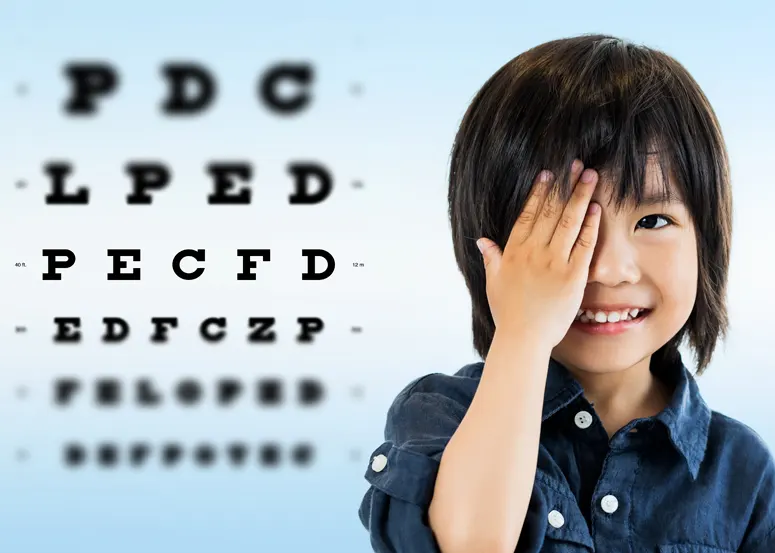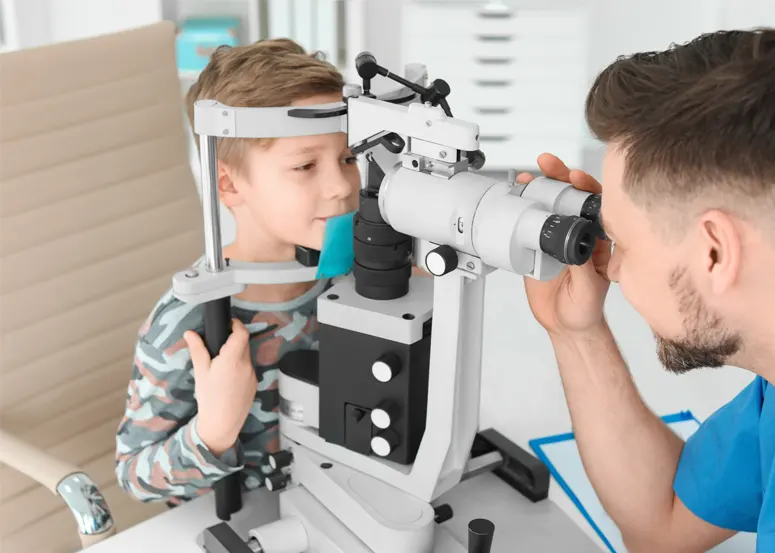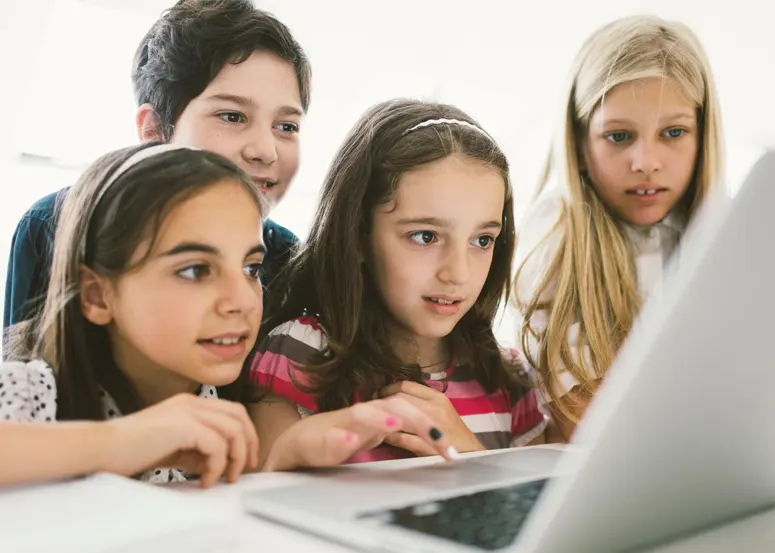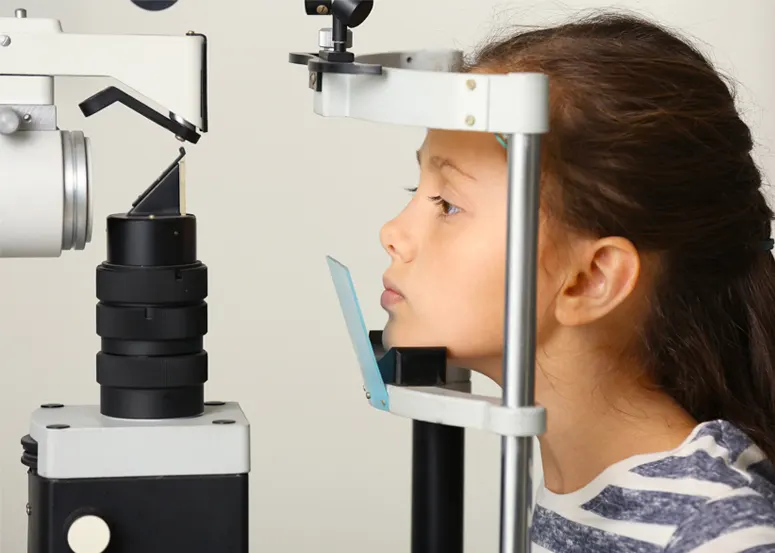Myopia also commonly referred to as ‘near-sightedness’ or ‘short-sightedness’, is a common eye condition which causes blurred distance vision. However, it is important it is managed in children for three main reasons:
- Increasing myopia can lead to serious eye health problems in the future1
- As the child’s eyes grow and their myopia increases, the dependency on glasses increases
- The ability of children to participate actively in sports and other activities can be reduced.
Parents can take positive steps to be aware of the condition and what they can do to help manage their child’s eyesight.
Be aware of the significance of family history
- Many parents believe they are myopic because they were not careful with the use of their eyes when they were young. Not so!
- Myopia in children is due to normal growth but due to family history the eye grows too long and this causes myopia. Progression of myopia needs to be understood and anticipated for appropriate management and intervention. Also, as myopia is progressive in children, the earlier it occurs the more progression and hence the higher the chance of high myopia resulting. It is high myopia which is most linked to sight threatening eye disease later in life.
Introduce lifestyle intervention early
- An increase in outdoor exposure can reduce the growth of the length of the eyeball thus reducing the rate of myopia progression2. This is most significant in the published research for pre myopes i.e. before myopia occurs.
- Reduce prolonged near tasks such as reading.3
Three Steps to Take to Help Manage Your Child’s Myopia
- Be informed about what myopia is and how it occurs. Being aware will help prompt an eye examination with an ophthalmologist or optometrist.
- Greater awareness of the significance of family history will both prompt an eye examination with an eye health professional and will also help in adopting environmental preventive measures such as increased time outdoors (with safe measures such as hats and sunscreen) and reduction of near work. Near work includes reading as well as devices.
- Vision screening of children in Australia traditionally occurs at preschool age (4-5 years old). Myopia can occur at any age in children but most often after this age, so parents and carers should be aware of the potential risk of myopia occurring to appropriately organise an eye examination and to start a conversation on preventive measures for myopia progression with an optometrist.
Although myopia is a growing eye health problem there is an ever-increasing body of evidence that there is an interaction with genetics and environmental factors. This gives us all the opportunity to intervene in the onset and progression of myopia with simple measures such as increased outdoor sunlight exposure and reduction of unnecessary near work. This, coupled with regular eye examinations, will help to manage myopia and reduce significant eye health issues in future years.
About the Australia and New Zealand Child Myopia Working Group
The Australia and New Zealand Child Myopia Working Group is a collaboration of leading optometrists and ophthalmologists. The Working Group’s aim is to set a recommended standard of care for child myopia management, in order to slow progression of myopia in children.
To download a free copy of The Australia and New Zealand Child Myopia Report – A Focus on Future Management, launched in 2019 by the Australian and New Zealand Child Myopia Working Group click here.
Members are (in alphabetical order):
- Dr Rasha Altaie, Ophthalmologist, Auckland
- Luke Arundel, Chief Clinical Officer, Optometry Australia, Melbourne
- Jagrut Lallu, Optometrist and Immediate Past President of the Cornea and Contact Lens Society of New Zealand (CCLSNZ), Hamilton
- Margaret Lam, Optometrist and National President of the Cornea and Contact Lens Society of Australia (CCLSA), Sydney
- Dr Loren Rose, Paediatric Ophthalmologist, Sydney
- Andrew Sangster, Optometrist and Board Member of New Zealand Association of Optometrists, Wellington
- Chair – Scientia Professor Fiona Stapleton, School of Optometry and Vision Science UNSW, Sydney
1 Holden B; Fricke T; Wilson D; Jong M; Naidoo K; Sankaridurg P; Wong T; Naduvilath T; Resnikoff S. Global prevalence of myopia and high myopia and temporal trends from 2000 through 2050. American Academy of Ophthalmology 2016
2 Morgan, I. G., A. N. French, R. S. Ashby, X. Guo, X. Ding, M. He and K. A. Rose (2018). “The epidemics of myopia: Aetiology and prevention.” Prog Retin Eye Res 62: 134-149.
3 Ip JM, Saw SM, Rose KA, Morgan IG, Kifley A, Wang JJ, Mitchell P. Role of Near Work in Myopia: Findings in a Sample of Australian School Children. Investigative Ophthalmology and Visual Science 2008:49(7):2903-2910






